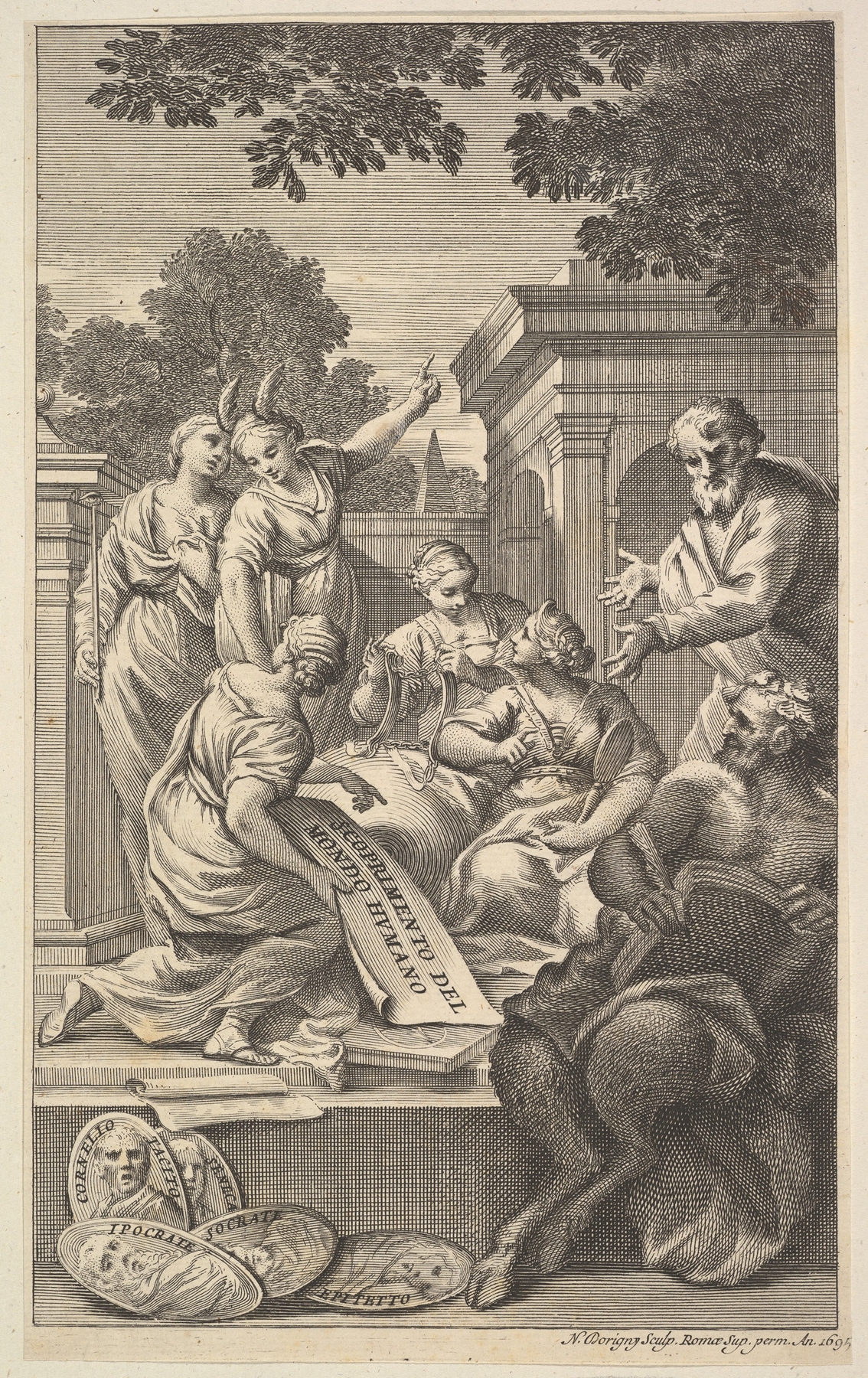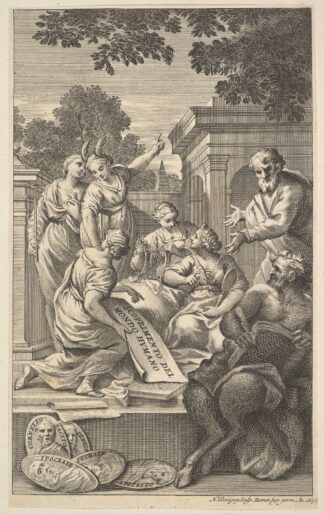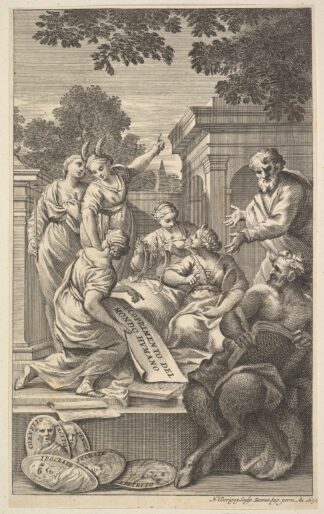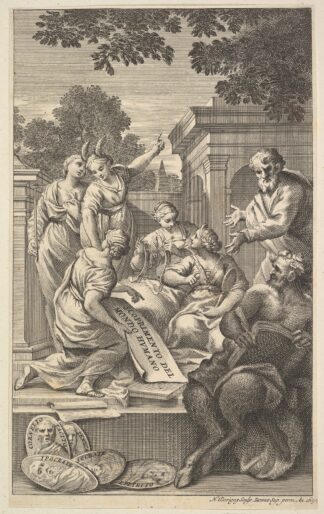Description
Allegorical composition celebrating the Humanities by Nicolas Dorigny printed on a Sweatshirt
About the Sweatshirt
Regular fit
Standard length, the fabric easily gives into movement
Comfortable
The fabric and fit of this item are extra comfy
Tear-away tag
Easily removable tear-away tag that allows you to add a custom inside label
This Unisex Premium Sweatshirt has a classic crew neck, flattering unisex fit, and soft 100% cotton exterior.
- 100% cotton face
- 65% cotton, 35% polyester
- Charcoal Heather is 55% cotton, 45% polyester
- Fabric weight: 8.5 oz./yd.² (288.2 g/m²)
- Tightly knit 3-end fleece
- Side-seamed construction
- Self-fabric patch on the back
- Double-needle stitched rib collar, cuffs, and hem
- Tear-away label
Nicolas Dorigny
Sir Nicolas Dorigny was a French engraver, the youngest son of Michel Dorigny, and was born in Paris in 1658. His education prepared him for the legal field, and he followed that profession until he was thirty years of age, when, as a result of deafness, he turned to the arts. He died in 1746.
Dorigny visited Italy, where he remained for twenty-eight years. His first plates were executed with the point. He is better known, however, for his technique unifying the point and the graver, characteristic of his later productions. He took for his model the admirable works of Gérard Audran.
Although he may not have equalled that celebrated artist, either in the style of his drawing, or in the picturesque effect of his light and shade, his prints will always be esteemed both for their merit as engravings and for the importance of the subjects which he chose.
In 1711, he was invited to England by Queen Anne to engrave the Cartoons of Raphael at Hampton Court, which he finished in 1719, and in the following year he was knighted by King George I. While he was in England he painted some portraits of the nobility, but with no great success. He returned to France in 1725, and was received into the Academy in the same year. He exhibited some pictures of sacred subjects at the Salon from 1739 to 1743, and died in Paris in 1746.






Reviews
There are no reviews yet.